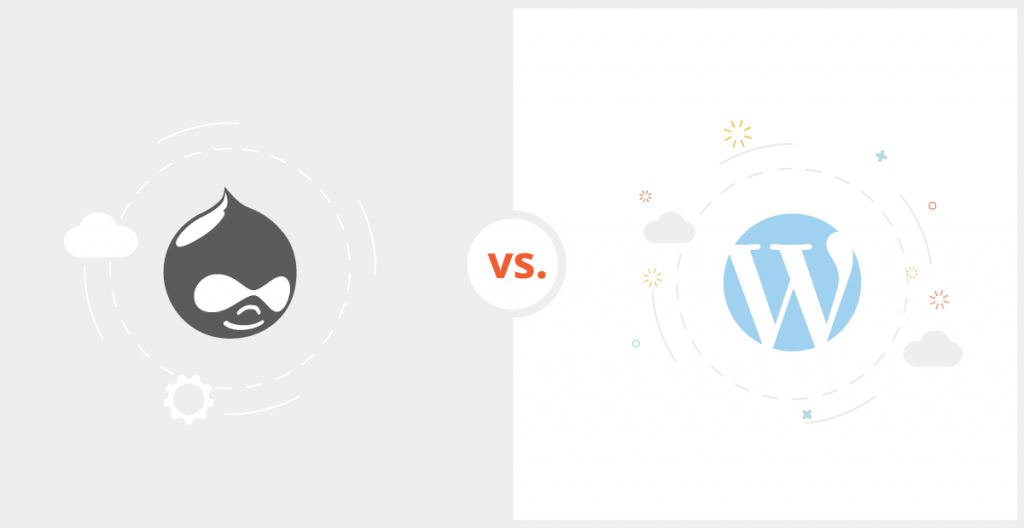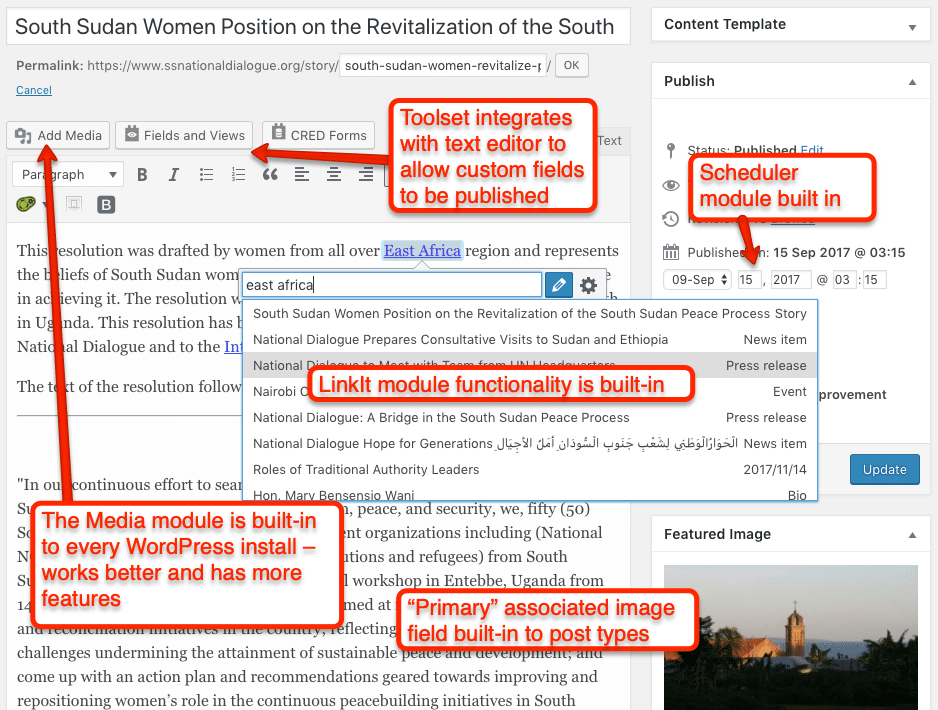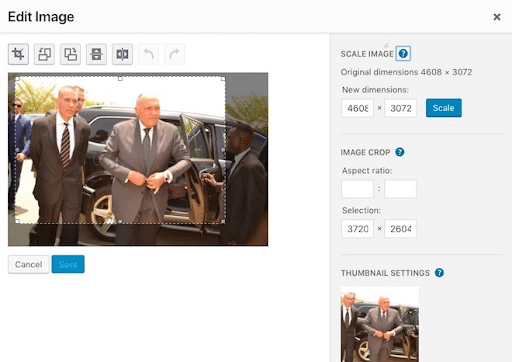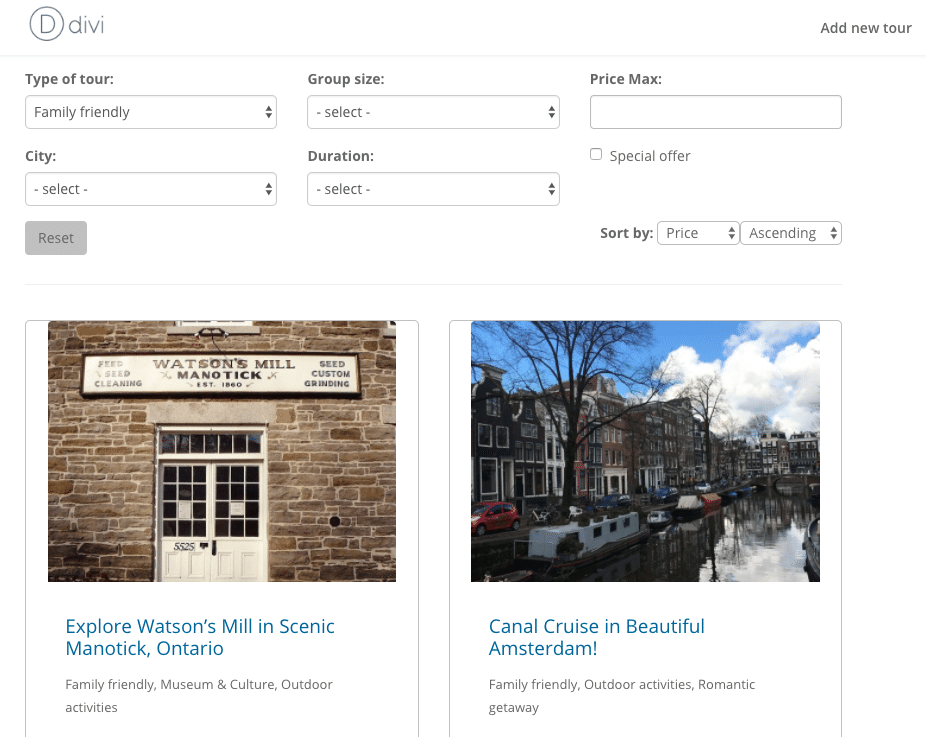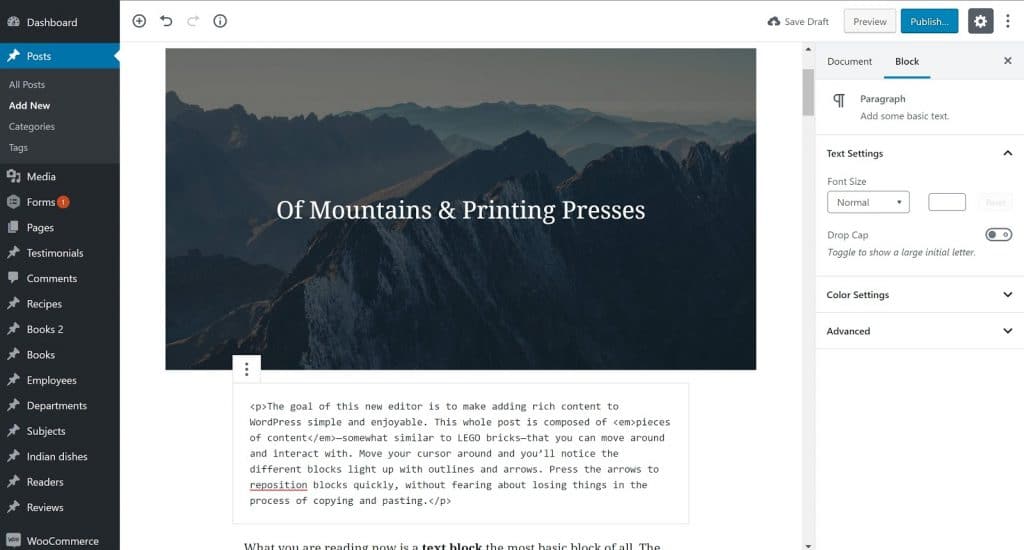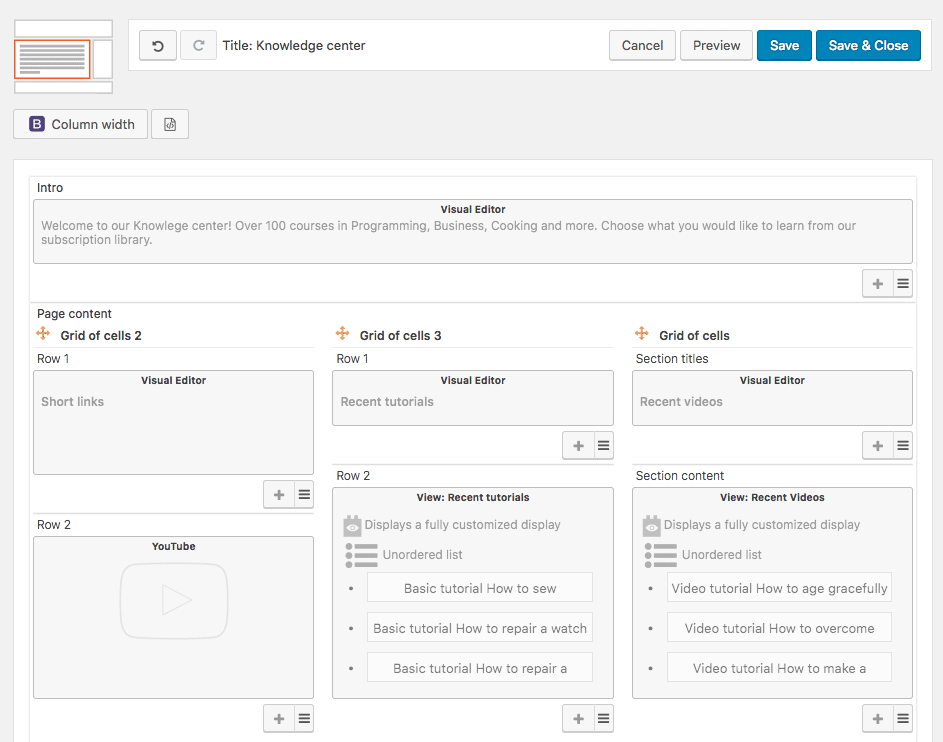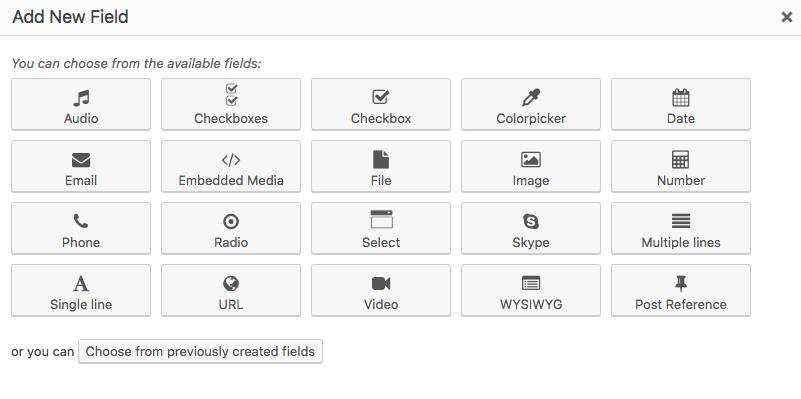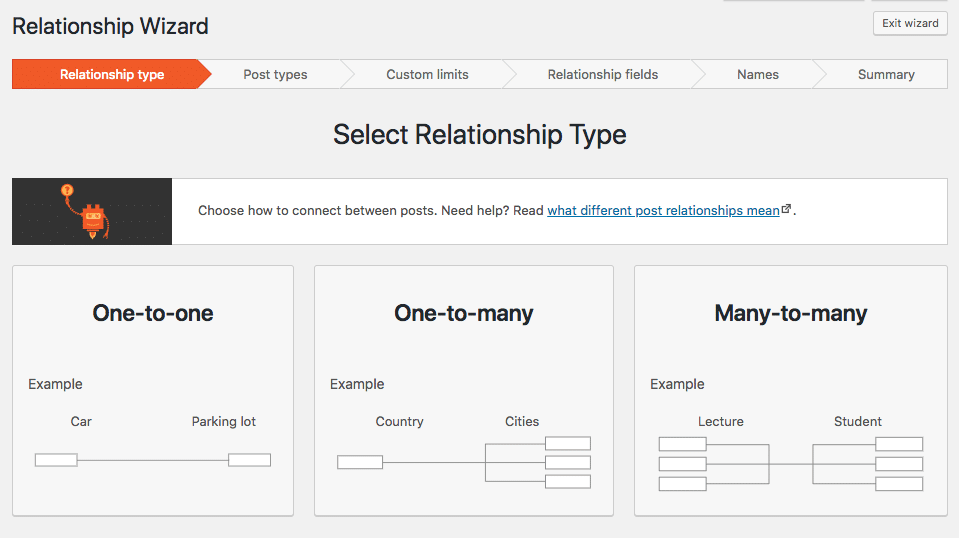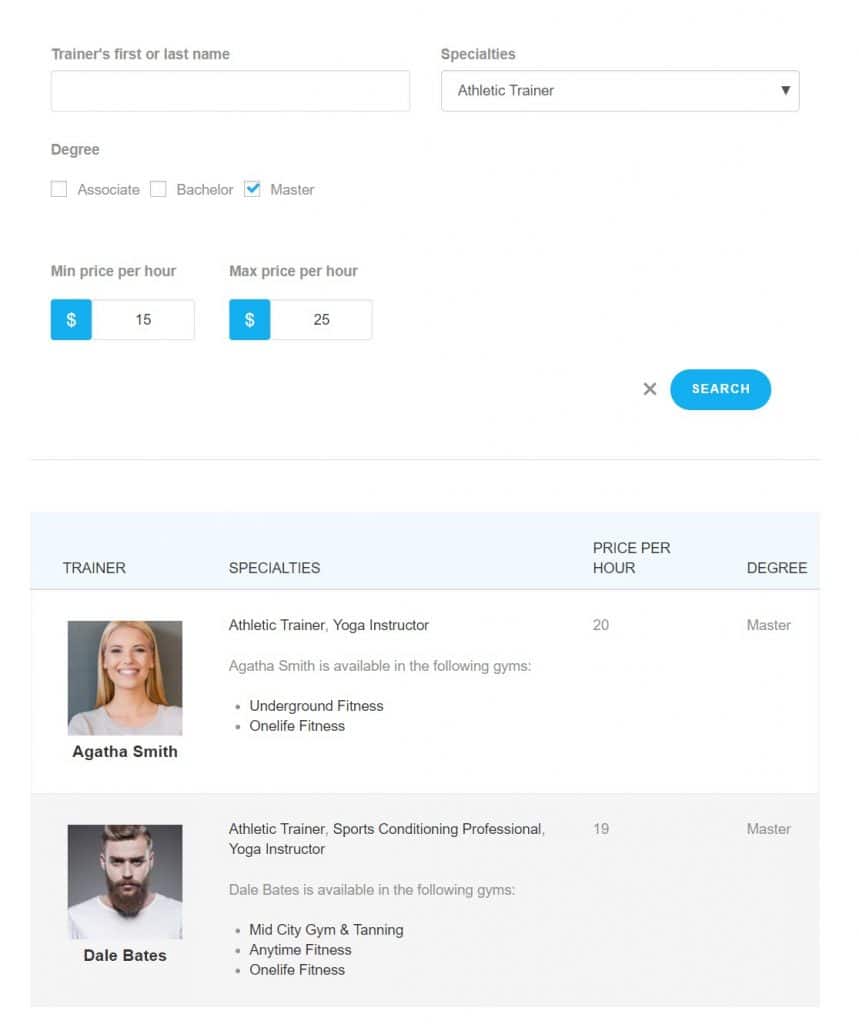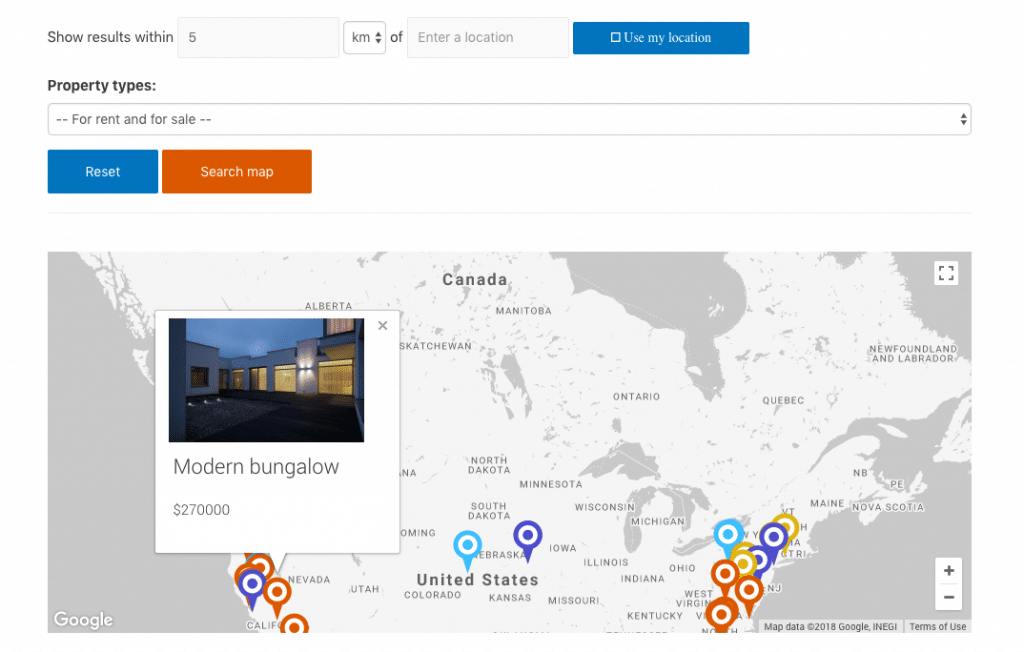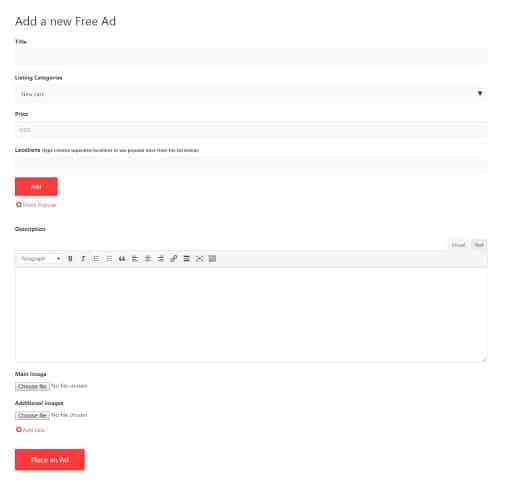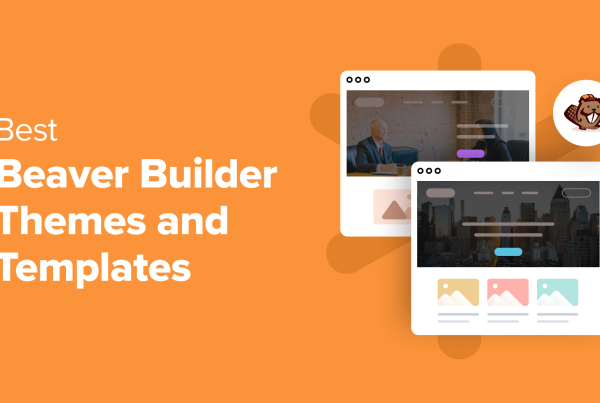“I wonder if I can build websites on WordPress just like I do on Drupal?”
The answer is, well, yes and no.
Yes because you can find almost all of the features available on Drupal by using WordPress. No, because with WordPress you will actually find it a lot easier and less time-consuming to manage your website.
Thanks to the combination of WordPress and Toolset, you can now re-create your complex Drupal site on the web’s most widely used Content Management System (CMS). From basic features such as custom post types to more advanced ones like custom searches with exposed filters, your WordPress website will contain the same components that made your Drupal one stand out.
Not only do you now get the flexibility and extensibility of a Drupal website on WordPress but it is much easier to build. WordPress requires far less complex coding and makes it much easier to publish your content.
If that’s not all, moving to WordPress is also simple when you follow Toolset’s ultimate guide to migrating from Drupal to WordPress.
We’ll have a look in more detail on exactly what Drupal features you can recreate using Toolset on WordPress. First, let’s explore what exactly are the problems developers tend to encounter on Drupal.
Some of the common problems with using Drupal
Drupal’s infrastructure, while impressive, is incredibly complex and could create more problems than it solves.
Drupal’s websites are not forward-compatible and require a complete rebuild when a new version of Drupal comes out. Of course, this is an incredibly expensive and time-consuming process. In fact, as a rule of thumb rebuilding on WordPress will cost around half the price as on Drupal.
Indeed, rebuilding a website on Drupal is so expensive that many developers instead choose to stay on Drupal 7 or an older version rather than upgrade. The result is that many websites are left dealing with features which are becoming increasingly obsolete.
Finally, while Drupal does contain a number of impressive features, what’s not so impressive is the effort and hours needed to implement them. Instead of adding elements in hours it can take days and weeks of frustration and poring over Drupal reference books. Luckily there is another way.
Toolset and WordPress will improve your website building experience
The combination of Toolset and WordPress makes it easier to not only build the foundations of your website but publish content too.
WordPress requires much less complex coding
WordPress and Toolset offers a much leaner core than Drupal meaning you don’t need to waste time on complex coding.
For instance, a basic Drupal 8 database comprises of more than sixty database tables whereas the WordPress equivalent has just twelve. And adding Toolset’s package of plugins does not bloat it because they fit into the native database architecture.
Publishing content is also far easier on WordPress.
Once you’ve built your WordPress website adding content to it is far easier than on a Drupal equivalent.
Here are some of the advantages:
- A constantly visible Save/Publish option
- A reliable text editor which is part of the core and won’t fail to function
- Flexible publishing settings to schedule posts as opposed to Drupal’s clunky Scheduler mode
- A great distraction-free mode to help you concentrate on writing your content
- A built-in LinkIt mode functionality
- An integrated cropping functionality
Not only are WordPress websites much easier to manage but they look better too. That’s thanks to the number of excellent themes available.
Use WordPress themes to make your website beautiful
With 3,705 options in the Theme Directory, WordPress lets you choose from many great-looking themes to bring your website to life. However, Drupal lacks a similar ecosystem of themes.
You can usually tell when a website is made using Drupal. It lacks a good design and will not stand out. WordPress sites are generally much better looking out of the box once you select the theme which suits your requirements.
Not only can your website immediately look good with a WordPress theme but you can also customize them so that they look exactly how you picture them. With the WordPress Customizer, you can easily make drastic changes to your page elements including your title, background images, and menus.
Basic Drupal features available on WordPress with Toolset
The good news for Drupal users who are worried about the time it will take to familiarize themselves with WordPress is that many of the basic components have an equivalent on WordPress.
- With Toolset Types you can create custom post types, fields and taxonomies using a “Drupal-like” method. That’s because Toolset provides a unified UI just like the CCK module which is now part of Drupal core
- You can add custom fields to user records thanks to Toolset
- Drupal’s Vocabularies can be replicated on WordPress with Toolset’s taxonomies which can also contain the same relationships including hierarchies
- For Drupal Views meet Toolset Views which provides the same functionality with even more templating and display options. While it cannot offer the same level of complexity it comes pretty close
Not only does Toolset and WordPress cover the basics of Drupal but it can also handle some of the more advanced aspects of the CMS.
Advanced Drupal techniques which can be recreated on WordPress with Toolset
Drupal is often advertised as the best choice for complex, content heavy and high traffic websites but thanks to Toolset and WordPress that does not have to be the case.
Using Toolset and WordPress allows you to imitate some of the most advanced features that once made Drupal stand out.
Let’s have a look at some of them:
-
Easily create and manage your content
Using Gutenberg and Toolset Types allows you to recreate how Drupal users might manage your content when they use Field Collection or Paragraphs.
Similar to Paragraphs, Gutenberg allows you to create and manage your content by combining custom blocks. And its integration with Toolset Types means this extends to custom post types, fields and taxonomies.
2. Complete control over how each page looks
You can combine Gutenberg and Layouts to control the structure and look of any page on your website down to its fields. While it is not an exact equivalent to Drupal Panels or Layout Builder, it offers a similar concept.
WordPress offers a number of these page builders which provide you with a drag-and-drop interface to edit your pages on the front-end. You can use Layouts to control the entire page (just like Panels and Layout Builder) while Gutenberg makes it easy to create post content.
3. Toolset custom fields
One of Drupal’s most powerful and distinct features is its custom fields and content types which can now be recreated on WordPress thanks to Toolset. Just like with Drupal, Toolset offers a variety of different custom field types including “Date”, “Address” and “Image” among many others.
4. Create relationships between your content
You can use Toolset to create post relationships on WordPress in a similar way to how developers use the likes of Entity Reference on Drupal.
While Entity Reference lets you relate any entity type, Toolset Types offers the chance to create relationships between content across post types. Furthermore, similar to on Drupal you can create one to many, one to one or many to many configurations.
Drupal features you can build with WordPress/Toolset
The combination of WordPress and Toolset also offers solutions for building features you would expect to appear on your Drupal website. Here are just some of them.
-
Create a custom search with multiple filters which update your results
One of Drupal’s most popular features is the “exposed filters” content search which is also available on WordPress by using Toolset.
Drupal’s “exposed filters” approach is known as “parametric search” on Toolset, and allows you to create a custom search which updates the results as you edit the filters.
Here’s an example of parametric search, if you are searching for a personal trainer you might want to put their qualifications (degree, master’s etc). Once you’ve added this some of the “Specialities” options will be eliminated if there aren’t any that match the qualification requirement.
2. Custom interactive maps
You can add customized interactive maps to your WordPress website just like on Drupal but in much less time. Plotting your information on a map on Drupal can take weeks – especially if you are customizing your markers, clusters and styling etc. However, with Toolset and WordPress you can have a map ready in hours.
Furthermore, Toolset allows you to set locations on a map on your WordPress website as if you were using Google Maps.
3. Front-end content creation forms
Toolset Forms enables you to add content creating front-end forms in a much simpler way than on Drupal.
While Drupal’s node form requires custom coding, Toolset can add some complex features to your forms without any PHP coding including:
- Setting whether the form creates new content or updates existing content
- Hiding fields from the user
- Notification emails when a form is submitted
- A limit on the forms from one user
Migrating from Drupal to WordPress just got easier
Not only does WordPress offer similar components to Drupal in a less complex way but actually migrating between the two is much easier than you would imagine.
Toolset offers a complete guide on how to migrate from Drupal to WordPress which will take you through every step from understanding the basic features to publishing your content.
Do you have any thoughts on the guide or on the differences between WordPress and Drupal? Let us know in the comments below.


